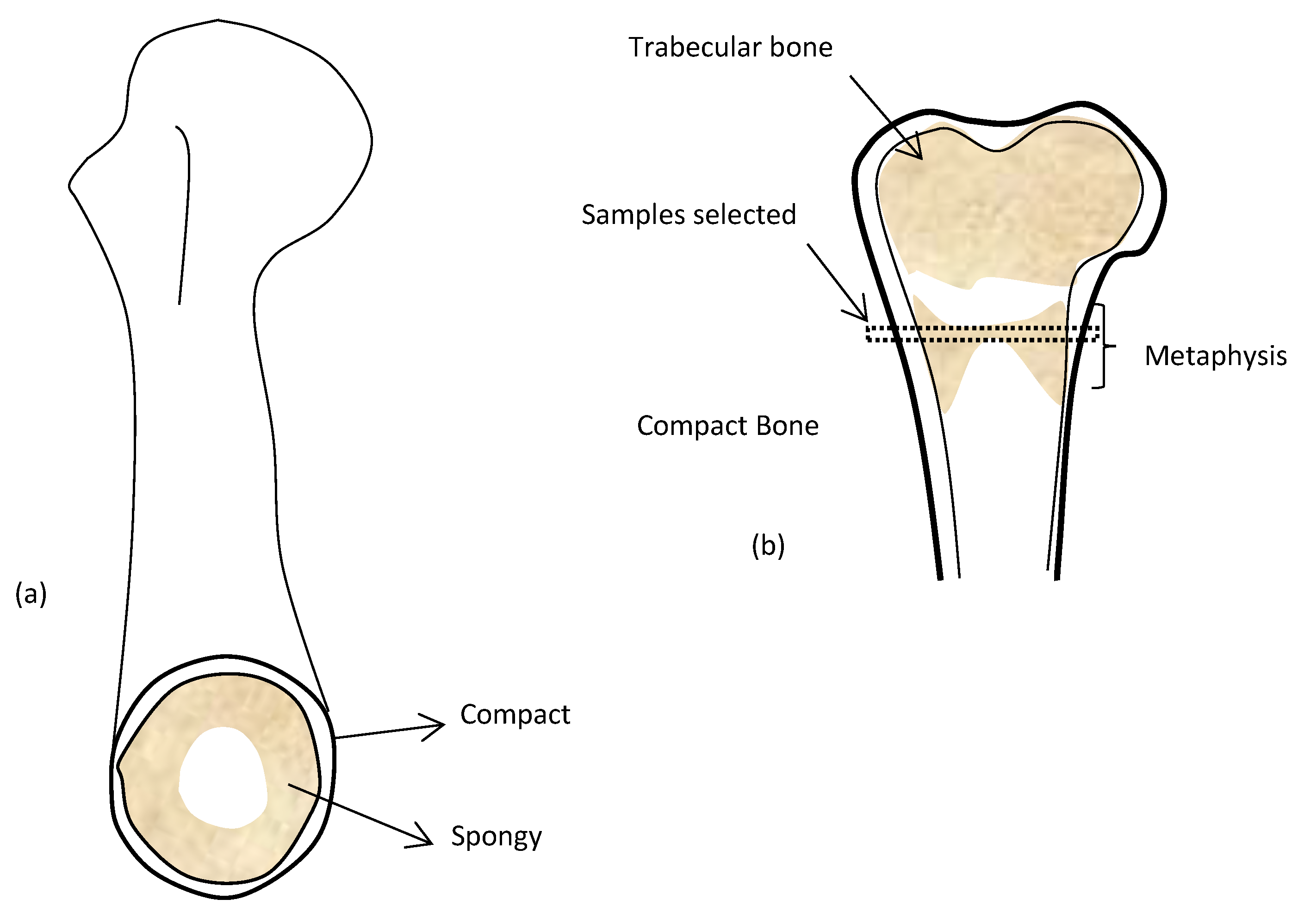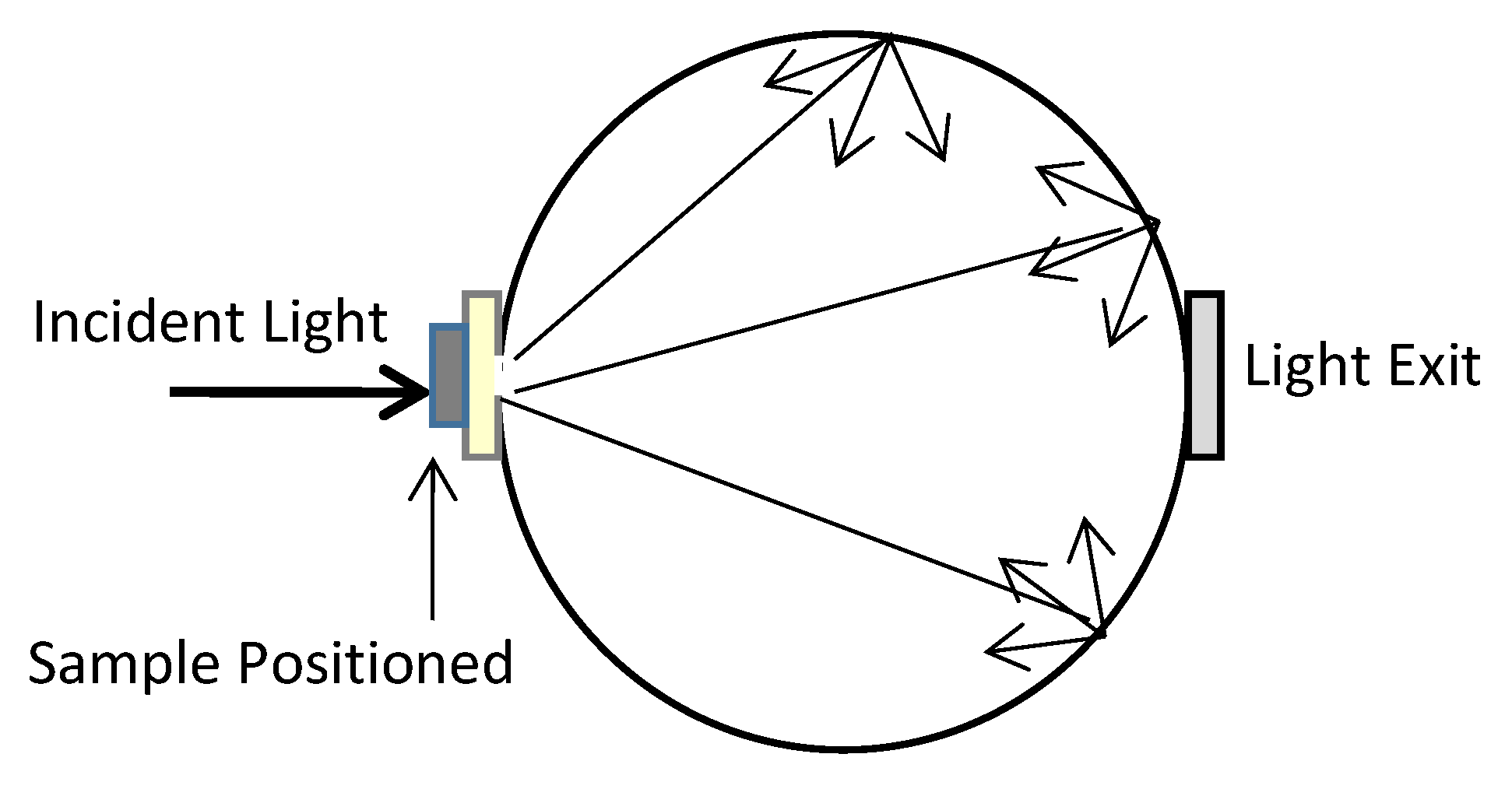Optical Properties on Bone Analysis: An Approach to Biomaterials †
Abstract
:1. Introduction
2. Materials and Methods
2.1. Bone Preparation
3. Results and Discussion
Acknowledgments
Conflicts of Interest
References
- Saager, R.B.; Quach, A.; Rowland, R.A.; Baldado, M.L.; Durkin, A.J. Low-cost tissue simulating phantoms with adjustable wavelength-dependent scattering properties in the visible and infrared ranges. J. Biomed. Opt. 2016, 21, 67001. [Google Scholar] [CrossRef] [PubMed]
- Landis, W. The strength of a calcified tissue depends in part on the molecular structure and organization of its constituent mineral crystals in their organic matrix. Bone 1995, 16, 533–544. [Google Scholar] [CrossRef] [PubMed]
- Kim, D.; Thangavelu, M.; Cheolui, S.; Kim, H.S.; Choi, M.J.; Song, J.E.; Khang, G. Effect of different concentration of demineralized bone powder with gellan gum porous scaffold for the application of bone tissue regeneration. Int. J. Boil. Macromol. 2019, 134, 749–758. [Google Scholar] [CrossRef] [PubMed]
- Paschalis, E.P.; Mendelsohn, R.; Boskey, A.L. Infrared Assessment of Bone Quality: A Review. Clin. Orthop. Relat. Res. 2011, 469, 2170–2178. [Google Scholar] [CrossRef] [PubMed]
- Yamakoshi, T.; Lee, J.; Matsumura, K.; Yamakoshi, Y.; Rolfe, P.; Kiyohara, D.; Yamakoshi, K.-I. Integrating Sphere Finger-Photoplethysmography: Preliminary Investigation towards Practical Non-Invasive Measurement of Blood Constituents. PLOS ONE 2015, 10, 0143506. [Google Scholar] [CrossRef] [PubMed]



| 1 | % w/v = g of solute/100 mL of solution. |
© 2019 by the authors. Licensee MDPI, Basel, Switzerland. This article is an open access article distributed under the terms and conditions of the Creative Commons Attribution (CC BY) license (https://creativecommons.org/licenses/by/4.0/).
Share and Cite
Antunes, A.; Pontes, J.H.; Monte, A.F.G.; Barbosa, A.; Ferreira, N.M.F. Optical Properties on Bone Analysis: An Approach to Biomaterials. Proceedings 2019, 27, 36. https://doi.org/10.3390/proceedings2019027036
Antunes A, Pontes JH, Monte AFG, Barbosa A, Ferreira NMF. Optical Properties on Bone Analysis: An Approach to Biomaterials. Proceedings. 2019; 27(1):36. https://doi.org/10.3390/proceedings2019027036
Chicago/Turabian StyleAntunes, Andrea, José HL Pontes, Adamo F G Monte, Alcimar Barbosa, and Nuno M F Ferreira. 2019. "Optical Properties on Bone Analysis: An Approach to Biomaterials" Proceedings 27, no. 1: 36. https://doi.org/10.3390/proceedings2019027036
APA StyleAntunes, A., Pontes, J. H., Monte, A. F. G., Barbosa, A., & Ferreira, N. M. F. (2019). Optical Properties on Bone Analysis: An Approach to Biomaterials. Proceedings, 27(1), 36. https://doi.org/10.3390/proceedings2019027036





